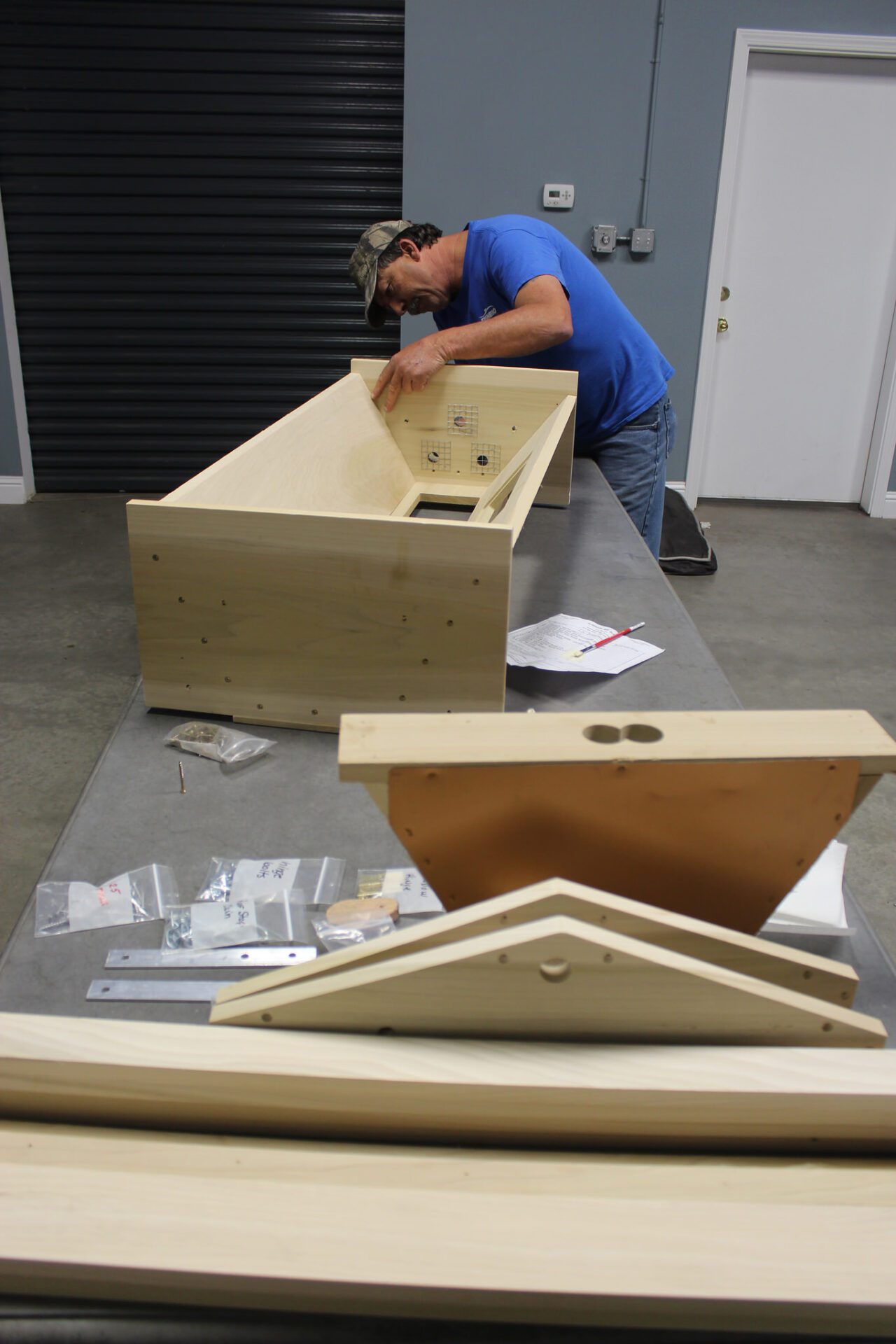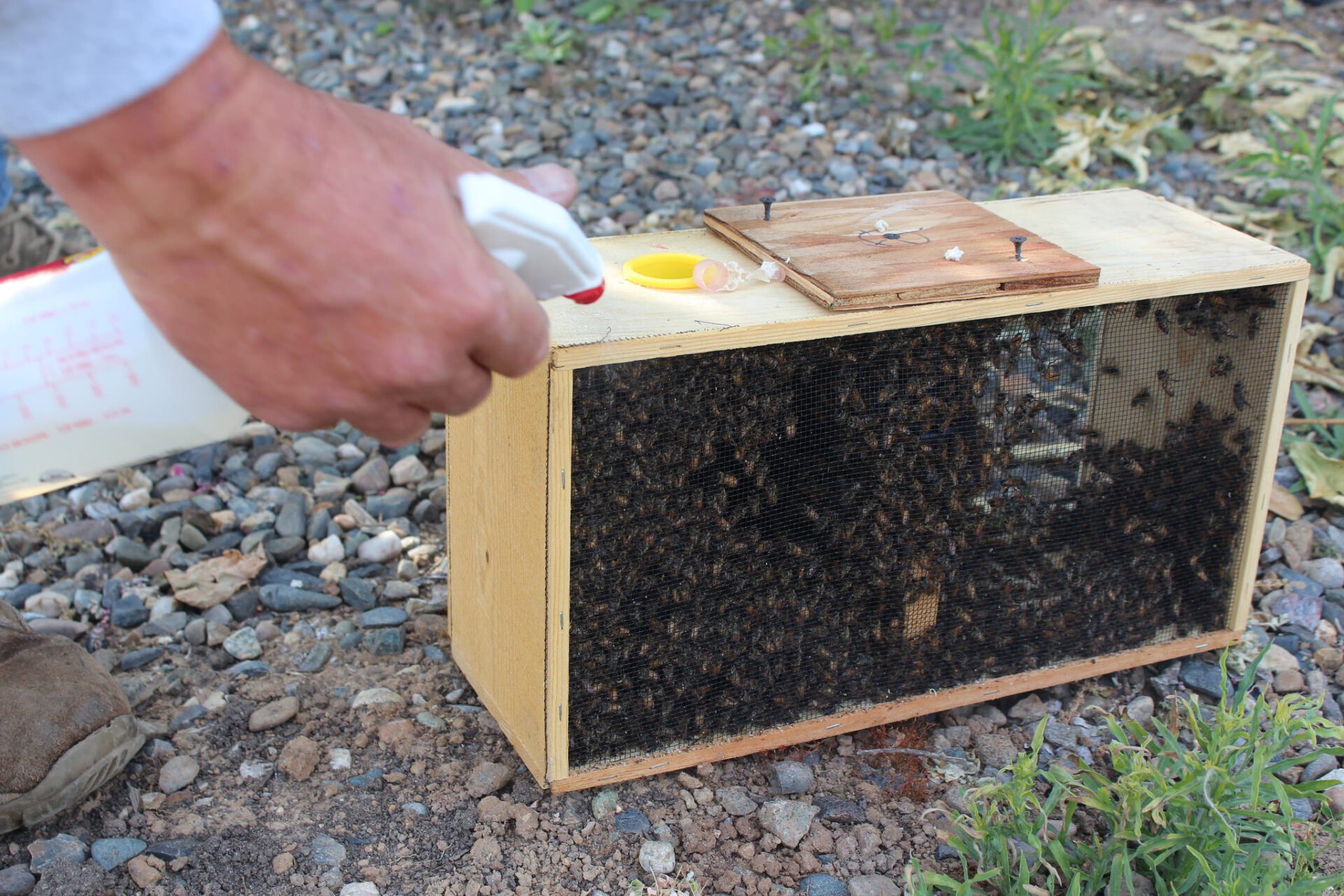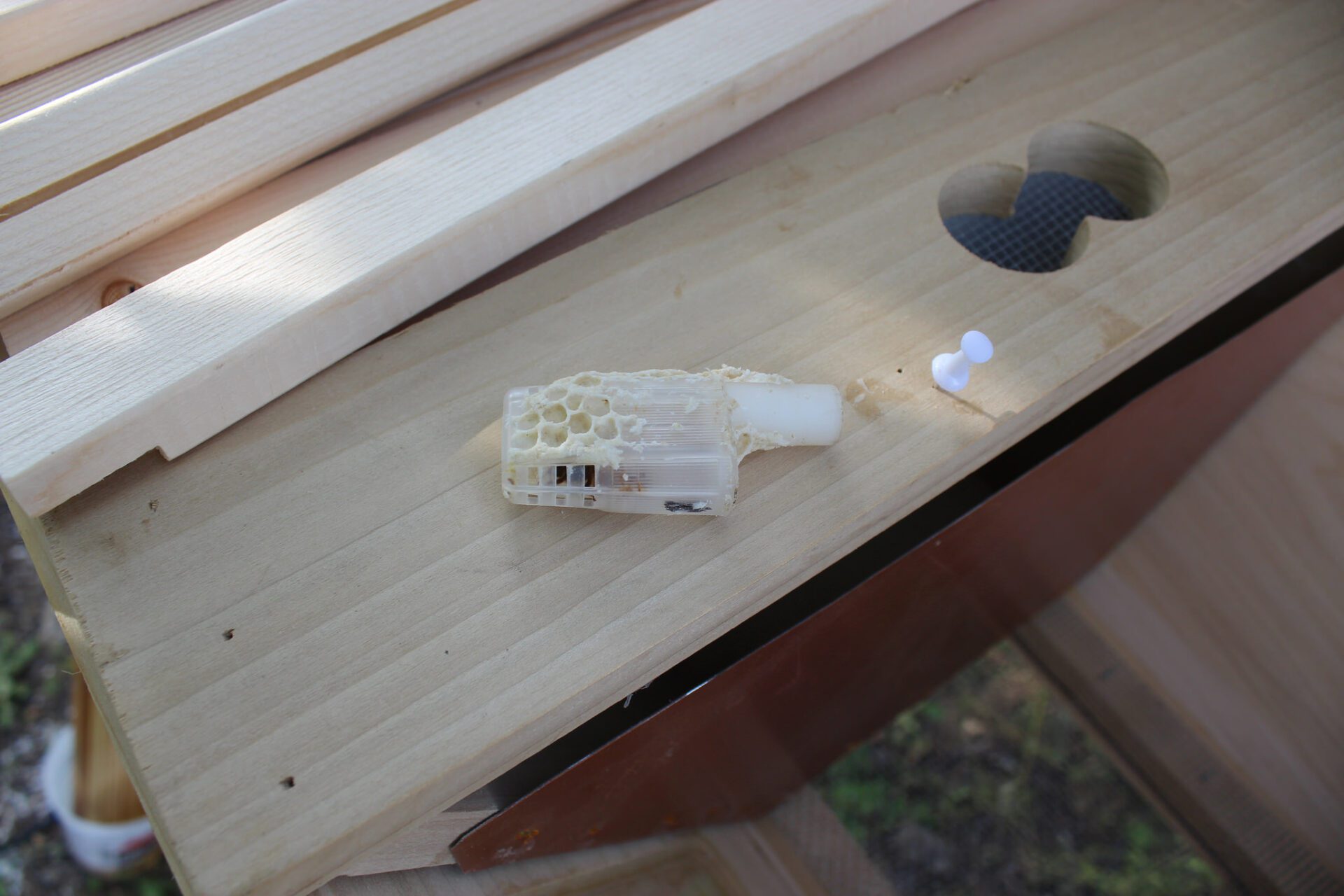Friday May 6, 2016
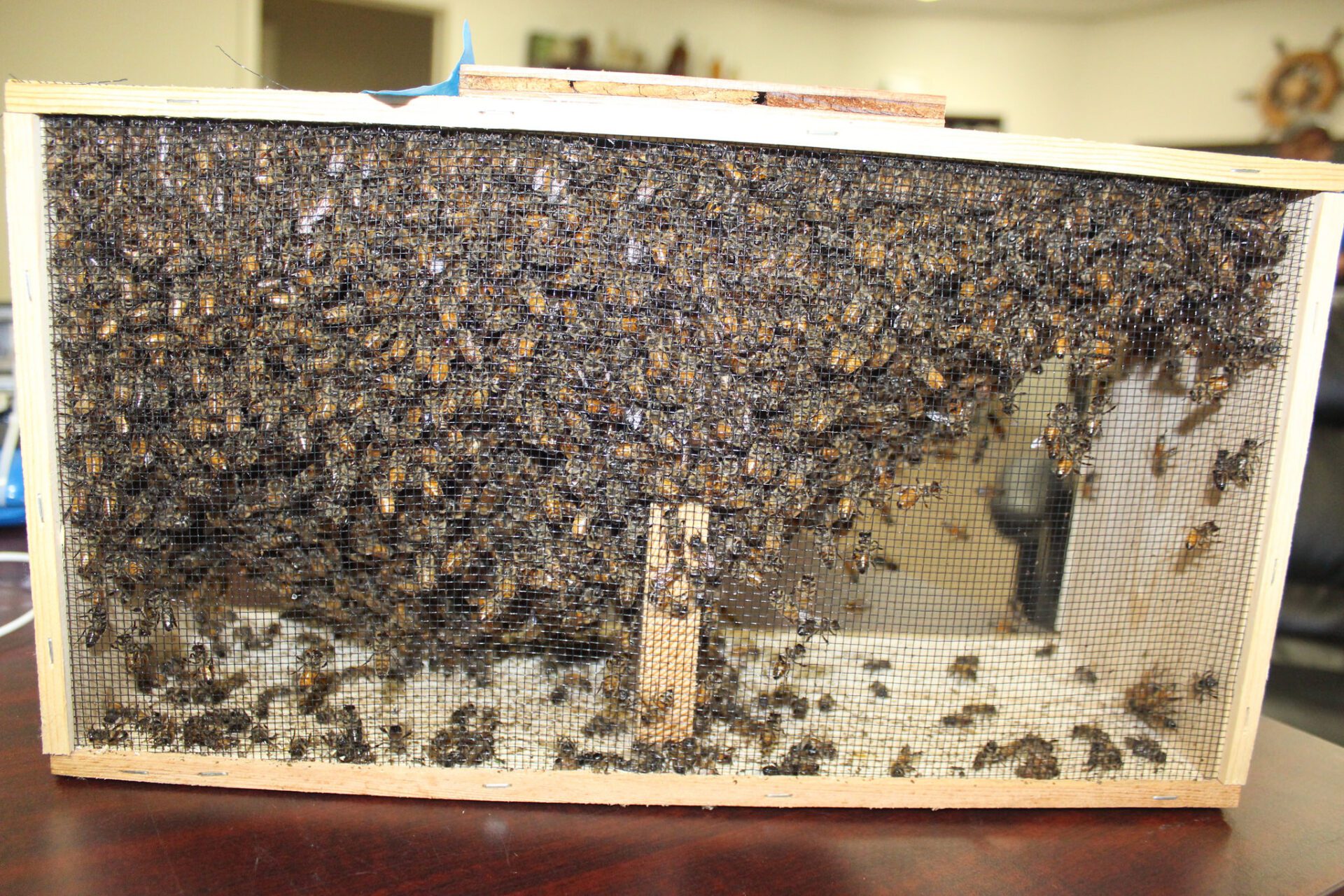
Gardening is one of our favorite hobbies at FISHBIO, and we have decked out our Oakdale office with dozens of fruit trees as well as vegetable planters and even chickens. Having a garden out back makes for a nice spot to eat lunch or go for a stroll on those days when it seems we are locked to our desks. After all, most of us got into this business because of our love for the outdoors! Our garden is currently buzzing thanks to our latest addition – a hive full of honey bees.
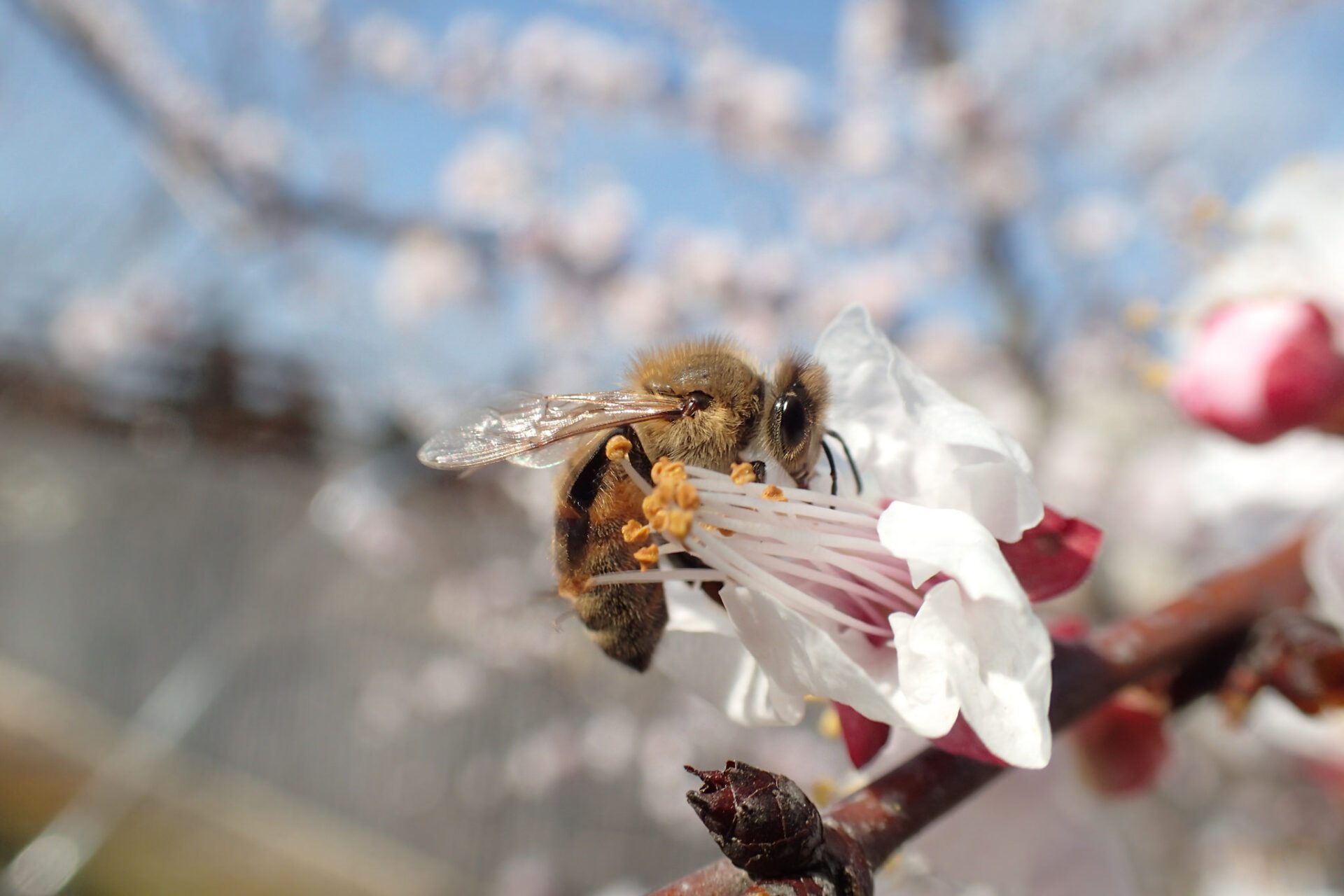
This spring while our fruit trees were in full bloom, we observed honey bees hard at work pollinating, and thought, “Wouldn’t it be great to have our own beehive…” The next thing you know, a box of wooden parts arrived, ready to be assembled. We couldn’t just buy a simple square box like the ones you see stacked in orchards across the Central Valley – no, we had to get the Cadillac of beehives, a custom built top bar hive from Superior Bee Supply, complete with a feeding station, viewing window and a copper roof. Our technician with the most experience at using diagrams to assemble flat-pack furniture, like you would purchase from Ikea, made quick work of fastening front “A” with side “B” and so on.

With our new honey bee abode ready to go, we picked up our starter kit of bees, which is an experience all its own. Imagine spending two hours in a car with a small wooden crate loaded with 2,000 buzzing bees riding shotgun. One can’t help but to have visions of a swarm of bees escaping and filling the inside of the vehicle. After arriving safely back at the office, it was time to introduce our bees to their new home.
We could have donned a beekeeper suit, but that would take all the fun out of things. The package of bees comes with a queen bee secured in her own little chamber that gets placed into the hive. A little cap on one end of the chamber is removed to expose a wax-like substance, which the worker bees will eat through to release the queen. To get the worker bees into the hive, we first sprayed them with sugar water. This wets their wings to prevent them from flying and gives them a treat that they will clean off each other. The crate of bees was then opened and the bees were poured into the hive. Although this process went as planned, our technician regretted not wearing the bee suit – ouch!

